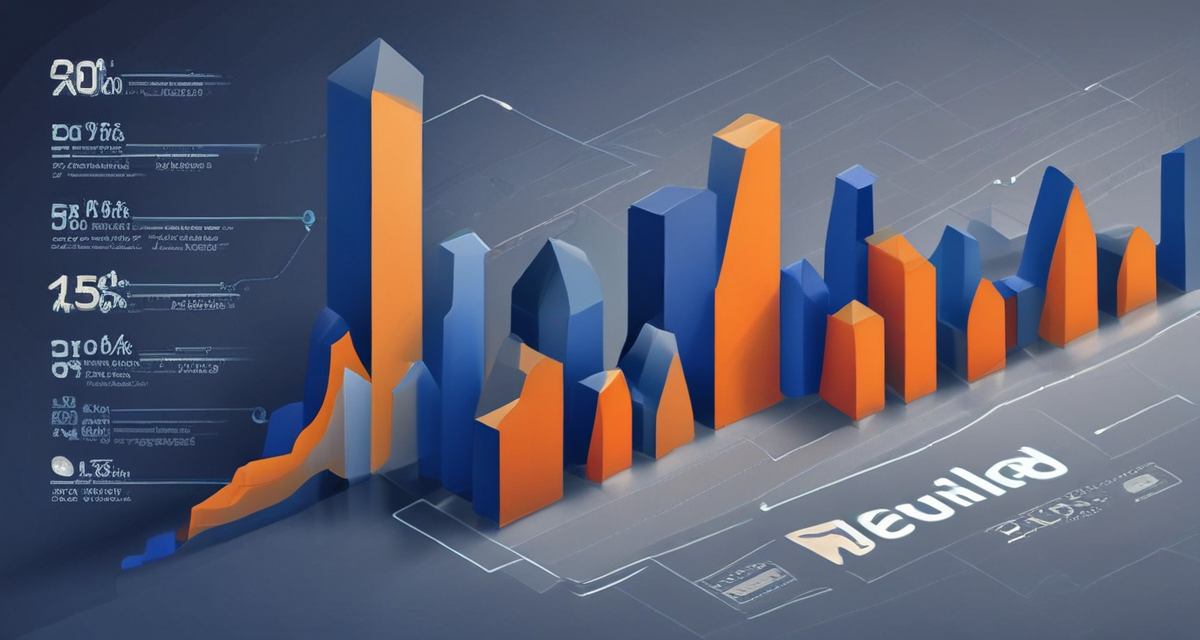Social media metrics are crucial for evaluating your content marketing strategy.
This article will help you understand key social media metrics and how they can improve your marketing efforts. By tracking metrics like reach, engagement, and click-through rates, you’ll gain insights to optimize your strategy effectively.
In this article, you will learn:
- How to measure key social media metrics
- Tips to enhance engagement rates
- Strategies for tracking website traffic
Understanding Key Social Media Metrics
When it comes to social media marketing, understanding the right metrics is crucial for measuring success. These metrics can provide insights into how well your content is performing and where you might need to make adjustments.
“Social media metrics are essential for evaluating the effectiveness of your content marketing strategy.”
Why Metrics Matter
Metrics offer a way to quantify your efforts and see the real impact of your social media campaigns. Without them, you’re
essentially flying blind.
- Reach: The number of unique users who see your content.
- Impressions: The total number of times your content is displayed.
- Engagement: Interactions such as likes, comments, and shares.
- Click-Through Rate (CTR): The percentage of users who click on your content.
Common Metrics to Track
Here are some common metrics you should be tracking:
- Follower Growth: The rate at which your follower count is increasing.
- Post Engagement: Total interactions divided by total followers.
- Conversion Rate: The percentage of users who take a desired action.
- Customer Sentiment: How users feel about your brand, often measured through sentiment analysis tools.
Tools for Measuring Metrics
There are several tools available that can help you measure these metrics effectively:
- Google Analytics: Great for tracking website traffic and conversions.
- Hootsuite: Offers comprehensive social media analytics.
- Sprout Social: Provides detailed reports on engagement and audience growth.
- Buffer: Helps you track the performance of your posts over time.
By understanding and tracking these key social media metrics, you can better gauge the success of your content marketing
efforts.
Analyzing Engagement Rates
Engagement rates are a critical metric for understanding how your audience interacts with your content. They encompass likes, shares, comments, and other interactions that indicate audience interest and involvement.
High engagement rates are a sign of strong audience connection and content effectiveness.

To break it down further, engagement rates can be calculated by dividing the total number of engagements (likes, comments, shares) by the total number of followers and then multiplying by 100 to get a percentage. This helps you understand the proportion of your audience that is actively engaging with your content.
Why Engagement Rates Matter
Engagement rates provide insights into the quality of your audience interaction. A high engagement rate often means your content resonates well with your followers. Conversely, low engagement might indicate a need to revisit your content strategy. Tools like Google Analytics and Hootsuite can help you measure these rates efficiently.
Boosting Your Engagement Rates
Here are some strategies to improve your engagement rates:
- Post Consistently: Regular posting keeps your audience engaged and increases visibility.
- Quality Content: Create content that is informative, entertaining, and valuable to your audience.
- Engage with Your Audience: Respond to comments and messages to build a community.
- Use Visuals: Images and videos tend to get higher engagement than text-only posts.
- Analyze and Adjust: Regularly review your engagement metrics and adjust your strategy accordingly.
For example, if you notice that video content receives higher engagement than text posts, consider incorporating more videos into your content plan. Likewise, if posts with questions receive more comments, use this tactic to encourage interaction.
Case Study: Successful Engagement
Let’s look at a quick case study. A small e-commerce business noticed low engagement rates on their social media channels. By implementing a new content strategy focusing on user-generated content, interactive polls, and regular posting schedules, they saw their engagement rates increase by 50% within three months. This shift not only boosted their social media presence but also led to higher website traffic and sales.
Analyzing and improving engagement rates is an ongoing process. Regularly monitoring these metrics will help you stay attuned to your audience’s preferences and adjust your content strategy for better results. Remember, engagement is not just about numbers; it’s about building a meaningful connection with your audience.
Tracking Website Traffic
One of the key indicators of your social media marketing success is the amount of website traffic generated from your social media channels. This metric helps you understand how well your content is driving users to your website, which is crucial for achieving your marketing goals.
Tracking website traffic helps measure the effectiveness of your social media efforts in driving users to your
site.

To effectively track website traffic, you’ll need to utilize tools like Google Analytics. This tool allows you to see where your website traffic is coming from, which social media platforms are driving the most traffic, and what content is most effective. This insight is invaluable for optimizing your strategy.
Key Metrics to Track
- Referral Traffic: The number of visitors that come to your website from social media channels.
- Landing Page Views: The first page users visit when they arrive at your website.
- Session Duration: The amount of time visitors spend on your website.
- Bounce Rate: The percentage of visitors who leave your site after viewing only one page.
- Conversion Rate: The percentage of visitors who take a desired action, such as making a purchase or signing up for a newsletter.
By monitoring these metrics, you can gain a comprehensive view of how well your social media efforts are translating into website engagement and conversions. For instance, if you notice a high bounce rate, it might indicate that your landing page content needs improvement.
Using Google Analytics for Tracking
Google Analytics is a powerful tool for tracking website traffic. Set up UTM parameters to track specific campaigns and understand which social media posts are driving the most traffic. This data can help you refine your content strategy and focus on what works best.
For example, if a particular post on Facebook is generating significant traffic, you might want to create similar content or boost that post for wider reach. Conversely, if traffic from Twitter is low, it might be worth revisiting your strategy for that platform.
Regular Analysis and Adjustment
Regularly analyzing your website traffic data is crucial. Set aside time each month to review your metrics and adjust your strategy accordingly. Look for trends and patterns to understand what drives traffic and what doesn’t.
For instance, you might notice that posts with videos tend to drive more traffic than text-only posts. Use this insight to create more video content and boost your traffic further.
Remember, tracking website traffic is not a one-time task. It’s an ongoing process that requires consistent monitoring and adjustment. By staying on top of your metrics, you can ensure that your social media efforts are effectively driving traffic to your website and
contributing to your overall marketing goals.
HiBrand.art has extensive experience in helping SMEs track and optimize their website traffic through effective social media marketing strategies.
Evaluating Content Performance
Understanding how well your content performs is essential for refining your social media strategy. By analyzing metrics like reach, engagement, and conversion rates, you can identify what’s working and what needs improvement.
The key to social media success lies in continuously evaluating and optimizing your content performance.

Content performance evaluation involves tracking several metrics:
- Reach: Measures how many people see your content.
- Engagement: Tracks likes, comments, shares, and other interactions.
- Conversion Rates: Indicates how well your content drives desired actions.
- Audience Sentiment: Gauges the overall reaction to your content.
Using Tools to Measure Performance
Various tools can help you measure content performance:
- Google Analytics: Excellent for tracking website traffic and conversions.
- Hootsuite and Sprout Social: Great for monitoring social media metrics.
- BuzzSumo: Useful for analyzing content shares and performance.
These tools provide valuable insights that can guide your content strategy.
Refining Your Strategy
Once you have the data, it’s time to refine your strategy:
- Identify high-performing content and understand why it worked.
- Replicate successful strategies while avoiding those that didn’t work.
- Continuously test and tweak your content based on metrics.
Regularly evaluating your content’s performance helps ensure your social media efforts are effective and aligned with your business goals.
For SMEs looking to optimize their social media strategy, HiBrand.art offers expert assistance in content creation, SEO, and digital marketing. With years of experience, we can help you drive growth and achieve digital success.
Leveraging Metrics for Growth
Understanding and leveraging social media metrics is crucial for growing your online presence and achieving your business goals. By monitoring key metrics, you can gain valuable insights into your audience’s behavior, preferences, and interactions with your content.
First, let’s recap the most important metrics to track:
- Reach: The number of unique users who see your content.
- Impressions: The total number of times your content is displayed.
- Engagement: Interactions such as likes, comments, and shares.
- Click-through rates: The percentage of users who click on your links.
Using tools like Google Analytics, Hootsuite, Sprout Social, and Buffer, you can measure these metrics effectively. Regularly reviewing and analyzing this data allows you to adjust your strategy and optimize your social media efforts.
For instance, if you notice a decline in engagement rates, consider experimenting with different types of content or posting at various times to see what resonates best with your audience. Similarly, if your click-through rates are low, you might need to improve your call-to-actions or make your links more enticing.
Additionally, tracking website traffic from social media can provide insights into which platforms and content types drive the most valuable traffic to your site. This information can help you allocate your resources more effectively and focus on the strategies that yield the best results.
At HiBrand.art, we’re dedicated to helping small and medium-sized enterprises (SMEs) optimize their social media and digital marketing strategies. Our team of experts can provide personalized guidance and support to ensure you’re making the most of your social media efforts.
Ready to take your social media marketing to the next level? Contact us today and let’s start growing your online presence together!




